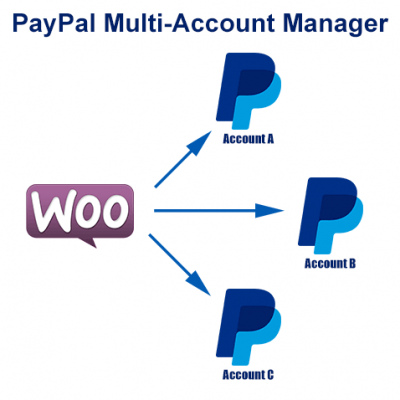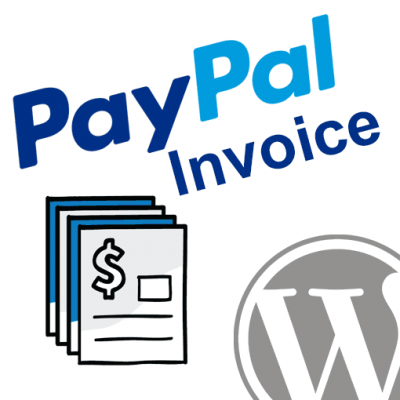Introduction
PayPal provides a variety of products to help business owners and developers process and manage payments. If you want to use your PayPal like a standard merchant account and process credit cards directly on your website, over the phone, or within your applications, you’ll need to upgrade your account to Payments Pro.
PayPal Payments Pro has seen many changes over the years. One of the recent changes involved renaming some of their products, and this has caused lots of confusion when it comes to Payments Pro.
In this article we’ll cover the history of Payments Pro and explain all of the flavors to help you avoid confusion when signing up for and ultimately integrating Payments Pro into your website or application.
VeriSign Payment Services – PayFlow Gateway
With standard merchant account service providers, you will often find that you need two pieces to complete the solution: the merchant account itself (to process your visa/mc/discover/amex transactions), and a gateway product (which allows developers to integrate the merchant account into applications.)
VeriSign is a company that developed and maintained one of the leading gateway products in the industry. It is compatible with lots of different merchant account providers and is very widely used. Again, though, people using the PayFlow gateway typically pair it with a merchant account from a separate company.
Today, many merchant account providers will also provide their own gateway so that a 3rd party is no longer required. In fact, PayPal was one of the first to do so when they introduced Website Payments Pro.
PayPal Website Payments Pro
Website Payments Pro was PayPal’s first launch of merchant services that included a gateway product (the PayPal API.)
By upgrading a standard PayPal account to a Website Payments Pro account, businesses could receive credit card payments exactly the same way they would with a “normal” merchant account. The payer can simply enter their credit card details into a form directly on the website or application to complete the payment, and they do not need to have a PayPal account.
The Website Payments Pro gateway consisted of the DoDirectPayment API on the PayPal web service platform. Developers could easily tie the direct credit card processing into their websites or applications using this API. Website Payments Pro made it up to version 3.0 before changes started happening, and you simply logged in to your account at http://www.paypal.com to manage everything.
PayPal’s Acquisition of VeriSign Payment Services
PayPal saw that their gateway product was limited in some of the features that other gateways offered. They found themselves trying to decide whether they should continue development of their own gateway products or go another route. On November 18, 2005, PayPal acquired VeriSign’s Payment Services business.
This acquisition brought in everything VeriSign had to offer including the PayFlow gateway, which was a much more mature gateway in terms of development time and features.
At this point, PayPal began the process of tying their own merchant account product (Website Payments Pro) into the PayFlow gateway.
PayPal Website Payments Pro PayFlow Edition
When PayPal first made their merchant services available on the PayFlow gateway it was launched as Website Payments Pro PayFlow Edition with a 1.5 version tag. I can only assume that 1.0 was considered PayFlow without PayPal, and when they added their own merchant service they released it as 1.5. There is probably more detail to that in reality, but that’s an easy way to understand it.
When using Payments Pro PayFlow Edition you had your regular http://www.paypal.com account, but then you also have a separate account at http://manager.paypal.com which was called the PayFlow Manager. This was used to manage all of your PayFlow gateway settings, view reports, etc.
Quick Review
At this point, we now have PayPal Website Payments Pro 3.0, which uses their own DoDirectPayment API gateway. We also have a separate gateway product, PayFlow, which now has the ability to use PayPal’s merchant service within it and this was Website Payments Pro PayFlow Edition 1.5.
These are essentially two separate products. If you’re using Website Payments Pro 3.0 you can only use the DoDirectPayment API to integrate into your website and applications and you would only login to http://www.paypal.com. If you’re using PayFlow Edition 1.5, you can only use the PayFlow API gateway to integrate into your website and applications, and you would actually have logins at both http://www.paypal.com as well as http://manager.paypal.com.
PayPal Payments Pro
Not too long ago, PayPal dropped the word Website from the product name and it is now known as simply Payments Pro.
One very important thing to note about this change is that they are now pushing everybody into the PayFlow gateway. Rather than have one Payments Pro that uses their own gateway and another Payments Pro that uses PayFlow, they’re simply using the PayFlow gateway for all Payments Pro accounts now. This bumped the PayFlow Edition version to 2.0, but again, they dropped that from the product name so it’s simply called PayPal Payments Pro.
When on a PayPal Payments Pro 2.0 account, you have access to both http://www.paypal.com and http://manager.paypal.com, and you also have full access to use both the PayFlow gateway or the DoDirectPayment gateway.
Now, the manager site is called PayPal manager instead of PayFlow Manager and it also includes new products and features like Payments Advanced, which gives you the merchant account + gateway combination in a PCI compliant package.
Confusion and Things to Consider
Unfortunately, all of the changes with Payments Pro has caused lots of confusion amongst business owners and developers alike. When somebody tells you they’re using PayPal Payments Pro, you don’t know if they’re referring to the old Website Payments Pro 3.0 with DoDirectPayment, the PayFlow Edition 1.5 with PayFlow gateway, or Payments Pro 2.0 with full access to both.
This all depends on the date the PayPal account was created and what version of Payments Pro is compatible with any given PayPal account version.
As such, if you sign up for Payments Pro now you need to make sure and figure out from PayPal which version you’re on. I’ve seen all too often where developers will spend time integrating DoDirectPayment just to find out their client isn’t compatible with that and needs PayFlow instead or visa-versa. You can call PayPal and ask them to verify which version the PayPal account owner is using: Website Payments Pro 3.0, Website Payments Pro PayFlow Edition 1.5, or Payments Pro 2.0. Once you know this for sure you can move forward with development confident that you won’t be wasting valuable time.
Conclusion
PayPal Payments Pro has changed alot over the years. While some of it may seem confusing and frustrating, the end result is a truly fantastic merchant account solution with a solid gateway product, and I feel it was well worth it.
Looking for Live Help?
Schedule a live meeting with Drew Angell, PayPal Certified Developer, and get all of your questions or concerns answered.
Featured PayPal Products and Services
-
PayPal Support
$150.00 -
PayPal for WooCommerce
FREE! -
WooCommerce Multiple PayPal Accounts Plugin
FREE! -
PayPal Shipment Tracking for WooCommerce
$49.99 -
Offers for WooCommerce
$59.99 -
WordPress PayPal Invoice Plugin
$20.00 -
PayPal Webhooks for WordPress
$79.99 -
Sale!
PayPal IPN for WordPress
Original price was: $59.99.$49.99Current price is: $49.99.








The integration uses the https://pilot-payflowpro.paypal.com simulator for testing, thus we refer you to the instructions in the Payflow guides. The developer’s guides include information on generating payment errors based on the transaction amount used for testing. If you use a different credit card number for testing that is not listed in the developer’s guide, it may also fail the transaction.
I’d like to know my balance in my pay pal it won’t let me in
If you are having trouble getting signed in to your account I would use the “forgot password” link to reset it.
Thank you for this article. i am trying to integrate this for a client and never having dealt with PayPal before was trying to figure out what’s what. Some places call it PayFlow Pro and others call it Pro Payflow. The interlinked documentation sites from PayPal are spread over multiple domains and often I found myself reading about Pro for Australian Payflow and the next moment I was continuing to read about the Pro and could no longer be sure if the writer decided not to add the additional Payflow for redundancy or if I was reading about some completely different product. Since Paypal, PayFlow, Pro all start with the letter P was not helping either, lol. Thanks for clearing some of the confusion, especially that last paragraph before your conclusion is valuable knowledge. Cheers!
I’m glad the article was useful for you. Thanks for the feedback!
Hi Andrew, wow, I just spent hours on the phone with PayPal integration reps and ebay support concerning an issue that suddenly arose with ebay (who owns paypal). I have been told by paypal that I have a very old paypal payments pro account that they referred to as version 1.5 which I suspect integrates using the what you call the DoDirectPayment Gateway. when setting up products on ebay I had always clicked the accept credit card buttons, but suddenly ebay started throwing off an error saying that I don’t have a credit card merchant account provider set up so I can not accept credit cards. Ebay could not explain why this error started occurring and instead said I need to set up a merchant account and according to the directions that ebay offers I should be able to set that up using my paypal payments pro account (they don’t differentiate between versions). While ebay says to select PayFlow as the gateway, the credential information that ebay is asking for does not match the API information that my paypal account generats. Thus I can not sign up for merchant services with my current PaypalPaymentsPro account. Paypal told me I could possibly upgrade to paymentspro version 3.0 or open a new payments pro payflow edition account altogether, and cancel my old account. they never were quite sure if a simple upgrade to payments pro 3.0 would solve my problem. In the end both PayPal and Ebay basically told me that I could not integrate my paypal payments pro version 1.5 account with ebay. Do you know anything about this or know if I should still be able to use my payments pro 1.5 api with ebay some how, the problem is the page to enter the api on ebay tells you to select payflow as the gateway and reqires the fields: merchant login, password, user, partner while the api information I get from paypal is username, password, and signature. do you know if upgrading to the most recent verion of payments pro (not the payflow edition), will give me the the api or credential information I need to integrate with ebay?
Payments Pro 1.5 was actually the “PayFlow Edition”. It’s the first version of PayPal Pro where they allowed you to use the PayFlow Gateway with PayPal as your processor instead of using DoDirectPayment. In fact, with 1.5 your only option is to use PayFlow, and the PayFlow gateway does indeed use the user, password, vendor, partner instead of user, pass, and signature. If you go to http://manager.paypal.com you’ll see that you log in there with those 4 values. You would use the same values to setup your eBay checkout with PayFlow.
PayPal Pro 3.0 is the newest version that uses DoDirectPayment, so if eBay is only allowing you to setup with user/pass/vendor/partner then 3.0 won’t work for you. The newest PayPal Pro is actually 2.0 (I know that’s confusing, but it’s actually the jump from 1.5 to 2.0 where as 3.0 was completely separate.)
With Pro 2.0 you actually get full access to both the PayFlow Gateway and DoDirectPayment. So that’s what they’re referring to when they mention getting you into a new account and ditching the old one. I actually had to do that myself not long ago so that I could start playing with Payments Advanced, which is only available in the new PayPal Manager, which is what they’re now calling the PayFlow Gateway.
So again, if you’re actually on 1.5 then you should have a login for manager.paypal.com and those same credentials are what you would use for the eBay setup. Are you actually using Pro on your website? Did you ever get your info for logging in to manager.paypal.com?
Hey Andrew!
I just got done working through your regular PayPal class using DoDirectPayment…etc..
thanks to your samples/templates.. it made it easy for a noob like myself to get up and running.. and get authorized sandbox payments..etc.
I was just informed, they want/need to use PayFlow Pro? (I guess something to do with the Paypal account they have/set-up?)..
anyways.. what are the main differences? Is there anything I should focus on when switching form DoDirectPayments to PayFlow?
I believe they to have an ‘older’ 1.5 account… (read the comments from the last few days, which rang a bell)
To be honest… Im completely confused with all this close (but different) naming convention they’ve used..
1.5 > 3.0 > 2.0….
different places to log in..
Is there some idiot’s guide diagram to all these ‘names’ and what they really mean/do? LOL..
Anyways… going from DoDirectPayments to Payflow, is it just the credentials in the template that need updating? anything in config? or front end that needs attention?
Thanks for a great class!!!
I’ve actually written an article about the History of Payments Pro that covers all of the questions you’re asking here.
If you’re on 1.5 you will indeed have to use PayFlow. 3.0 would be DoDirectPayment only, and 2.0 gives you full access to both sets of API’s.
I am integrating my application with paypal payment gateway but facing issue in creatingrecurringpaymentprofile “DPRP is disable for this merchant”, I am using the sandbox test account.
Can you please help me out ?
DPRP = DirectPayment Recurring Payments. This is an additional addon to PayPal Pro. You won’t be able to use CRPP with a credit card until you get DPRP enabled on the account.
For a sandbox account if you create a fresh one and make it a Pro account it should get DPRP enabled by default. For live you have to call and get it approved and enabled.
Per PP sales support (plus 2 solid days drowning in PP’s documentation):
DPRP is:
1.) A service associated with PayPal Payments Pro (“PPPPro”) VERSION *3*.
Version 3.0 is the OLDER version of PPPPro. If you do/can login to PayPal Manager, your account is v2, NOT v3.
2.) An optional add-on for v2 PPPPro accounts.
You can add DPRP to PPPro v2, for an additional charge. (I–U.S. merchant, 9/9/2016, was quoted $30/mo).
Per “Chris” at PayPal, this service is provided to support existing vendors (like my client) who use PPPPro v2, but have older shopping cart platforms that aren’t able to use the Payflow gateway (aka PP’s REST api).
For some supporting info, see https://www.paypal-knowledge.com/infocenter/index?page=content&id=FAQ2020&expand=true&locale=en_US
If you’re getting the “DPRP is not enabled…” message, you are probably on PPPPro v2. If so, you have 4 options (AFAIK) for recurring payments:
1.) Use the PP “Pay now”-style button UI.
2.) “Payflow Pro Recurring Billing”. This takes 2 things:
+ Add “Payflow Pro Recurring Billing” to your account. This costs $10/mo (here, now) in addition to the $30/mo for PPPPro.
+ Use a shopping cart that supports PP’s REST api.
(NB: if you’re using Drupal/Drupal Commerce, you’re out of luck as of 9/9/16).
3.) DPRP + PPPPro v2
See notes above. $30/mo in addition to the $30/mo for PPPPro. Call PP sales.
4.) DPRP + PPPPro v3
Call PP sales and ask to switch your account from v3 to v2. This is a fairly involved process, fyi. Not sure about costs.
–CORRECTION(?)–
Re. the above comment (“Jaskho on September 9, 2016 at 1:57 pm”)…
First: be advised that I am not authoritative on these matters. Yesterday I thought I’d finally got my head around things PayPal. I should have known it was as illusion:)
The statement that PPPPro v2.0 + Payflow Pro Recurring Billing requires using the REST api is (I think) in error. It appears the NVP api is supported, but the parameters are different than those for DPRP.
See:
https://developer.paypal.com/docs/classic/payflow/recurring-billing
https://developer.paypal.com/docs/classic/payflow/integration-guide/#core-credit-card-parameters
https://developer.paypal.com/docs/classic/payflow/integration-guide/#payflow-connection-parameters
That’s correct. Payments Pro 2.0 / PayFlow does not use the REST API.
So very interesting thank you ! I would love an update in 2023 🙂
I kind of did an intro to the new stuff here: https://www.angelleye.com/what-is-paypal-complete-payments/
I’ve added a more detailed follow up to my backlog. I’ll get to it ASAP! 🙂